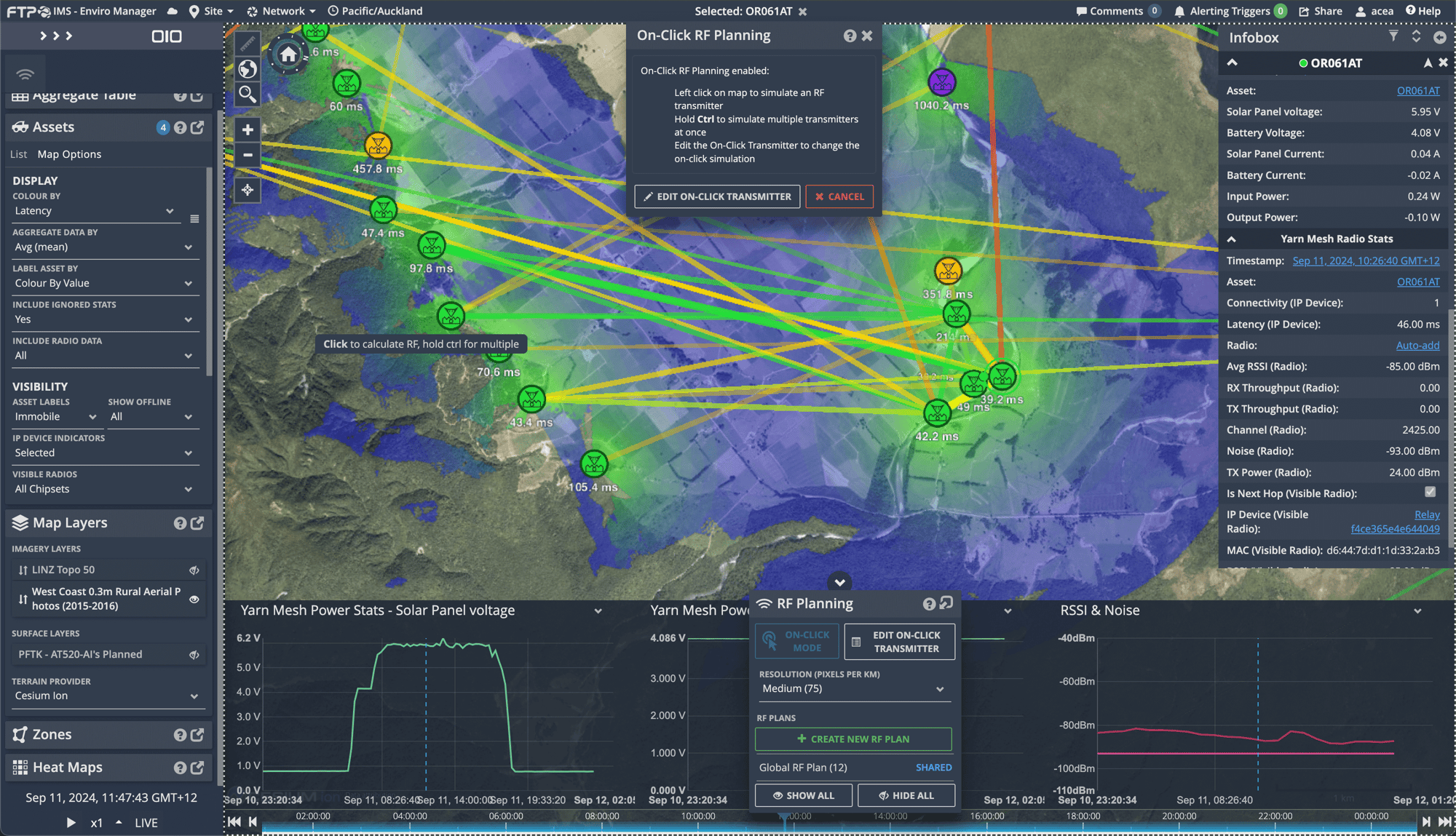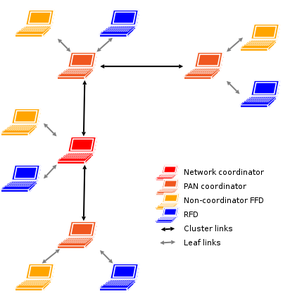Yarn Mesh, up, down, over, around and beyond
Set a new benchmark for IoT networking and edge intelligence—unlock instant visibility and decisive action, anywhere.


How is Yarn Mesh different to LoRa/LoRaWAN?
Yarn Mesh uses Zigbee or IEEE 802.15.4 which is a low-rate wireless personal area network (LR-WPAN) that occupies the 2400–2483.5 MHz band.
Zigbee and LoRaWAN® fulfill distinct roles and are tailored for diverse IoT applications.
Zigbee protocol excels in establishing wireless control and monitoring systems within confined spaces. It finds common applications in home automation, smart lighting, and industrial monitoring. Zigbee devices offer dependable and low-latency wireless connectivity, making them well-suited for real-time automation.
Conversely, LoRaWAN® is engineered for long-distance communication and can accommodate numerous devices over expansive areas. It proves effective for applications requiring low data rates, such as smart agriculture, asset tracking, and smart cities. LoRaWAN sensors boast prolonged battery life and reliable data transmission across extensive distances, making them apt for remote and outdoor installations.
Yarn Mesh takes the best from both of these technologies to create a low-power, low-latency, long range mesh network with exceptional battery life and highly reliable data transmission.
Network Capacity
Data Rate
Zigbee protocol excels in low-data-rate applications, providing reliable and secure data transmission at up to 250 kbit/s. In comparison, LoRaWAN® supports both low (250 bit/s) and high-data-rate applications (22 kbit/s). Yarn Mesh is at least 10 time faster than LoRaWAN.
Topology
LoRaWAN® uses a star-of-stars topology, where LoRaWAN gateways relay messages between end devices and the central network server. At the same time, Zigbee offers various network topologies, including star, tree, peer-to-peer, and mesh networks. Each topology affects message routing and device connections differently.

Zigbee Pros
Flexible network structure: Zigbee offers a flexible network structure with multiple options for network configurations. However, due to its limited communication distance and weak capability to penetrate walls, expanding a Zigbee network can be challenging. Nevertheless, its flexibility provides versatility in designing networks for specific applications.
High security: Zigbee utilizes the AES-128 encryption algorithm, providing a high level of security during data transmission. This encryption algorithm ensures that data is securely transferred and protects against unauthorized access. Individual applications using Zigbee can tailor their security properties to meet their specific needs.
Short delay: Zigbee boasts short delays in response time, resulting in prompt and efficient communication. Nodes in a Zigbee network can quickly switch from sleep to working mode in just 15ms. Additionally, individual nodes can connect to the network in as little as 30ms, further reducing power consumption and conserving energy.
Large network capacity: Zigbee networks can accommodate many connected devices. Each can include up to 255 Zigbee network nodes, with one designated as the master device and the rest as slave devices. When connected through a network coordinator, it can support over 64,000 nodes.
Leverage Yarn Mesh today and elevate your operational game
Be a part of a community who use Yarn Mesh and revolutionise your operations for a scalable future.
